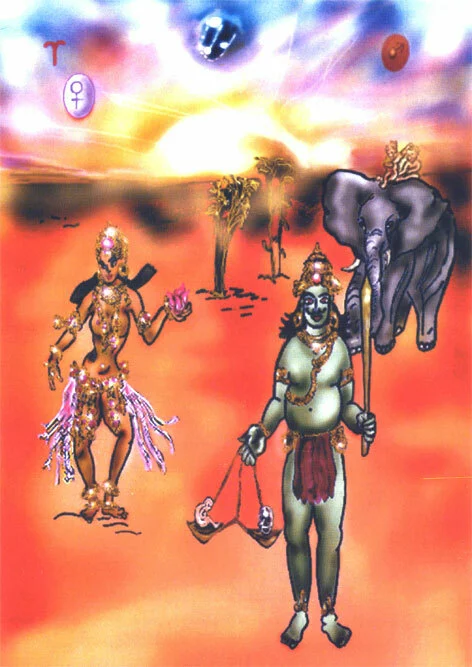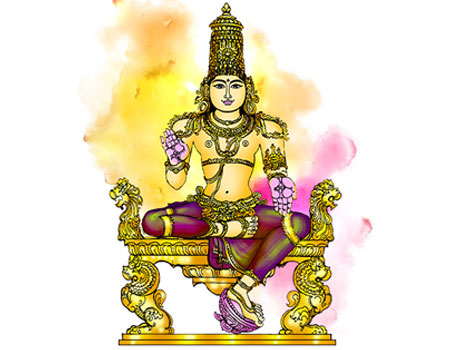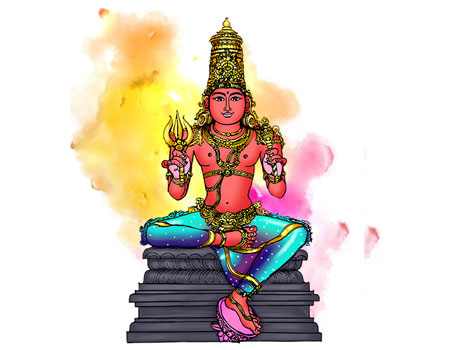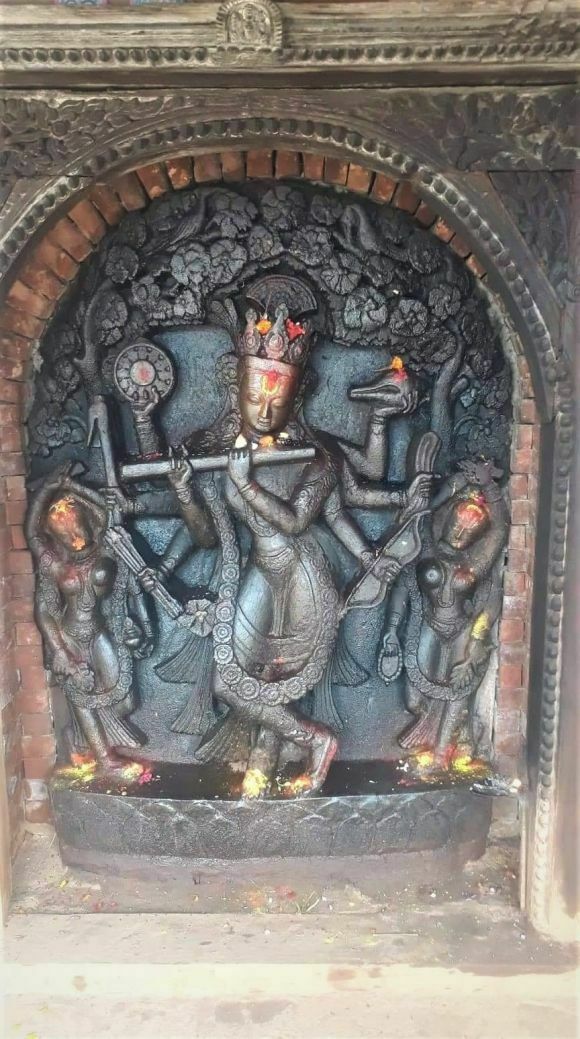#lakshmi


The #13 #Mukhi #Rudraksha is distinguished by its thirteen natural facets, or "mukhis," each representing a unique aspect of divine energy. These facets enhance the bead's spiritual potency, making it a powerful tool for achieving desires, gaining divine blessings, and experiencing profound spiritual growth.
Beej Mantra : #Om #Hreem Namah
Recommended Chalisa/Stotram : #Lakshmi Chalisa
Nepa's Energization Procedure : Prana Pratistha Pooja with Venus Beej #Mantra
The 13 Mukhi Rudraksha is linked with #Bharani #Nakshatra and #Venus ( #Shukra). It enhances creativity, passion, and prosperity, making it ideal for those influenced by Bharani or Venus.
https://nepalirudraksha.com/en-ie/collections/thirteen-mukhi-13-face-rudraksha
https://www.youtube.com/watch?v=WU1PzvYgA_U
BREAK FREE From Money Blocks with #Lakshmi #Mantras ~ Achieve Your Financial Goals Now! Mahakatha
https://www.youtube.com/watch?v=wrbn-yy5xcE
#RajarshiNandy explains about #10 #Mahavidyas, #How To #Worship Them | Higher Realms Of Upasana, Siddhis
The #Ranveer #Show is back with another episode with Rajarshi Nandy. In this episode, #Rajarshi sir dwelled deep into the world of spirituality and explained the true form of #Maa #Kali. Shri Rajarshi Nandy is a Sadhaka and an adherent of the #Sanatan #Dharma. Rajarshi sir is also a technical writer by profession, an upasaka, an author, a speaker, and a columnist with a keen interest in exploring spiritualism.
In this episode, we dives deep into the concept of the Dash Mahavidyas, exploring the tantric versions of #Saraswati, #Lakshmi, and #Durga and their unique powers and applications. The discussion also touches on the role of yoginis, the significance of Kul Devata, and the importance of embracing the complexity of Shaktism.
Every time I have a conversation with #Rajarshi-Nandy, I find myself gaining so much more knowledge. I hope that after seeing this episode, you will feel the same. Enjoy this episode and let us know your thoughts in the comments!
(0:00) - Start of the podcast
(3:27) - Rajarshi Nandy x Ranveer Allahbadia begins
(4:30) - Maa Saraswati
(13:11) - Reaching high realms of Upasana
(17:13) - Maa Lakshmi
(28:30) - Tantra, mantra & vaishnavism
(32:34) - Maa Kali
(36:50) - Sages of ancient India
(39:40) - Maa Durga
(46:00) - Story of Mahishasura
(51:10) - Significance of animals
(57:00) - Kul devta and kul devi
(1:08:30) - Chausat Yogini
(1:13:30) - Maa Matangi
(1:17:30) - Temples that are destroyed
(1:19:50) - Mahavidyas
(1:26:40) - Gurus
(1:35:20) - Maa Chinnamasta
(1:42:15) - Kundalini Jagaran
(1:52:00) - Maa Bhuvaneshwari
(1:58:43) - Maa Bagalamukhi
(2:05:14) - Maa Dhumavati
(2:10:45) - Maa Tripura Bhairavi
(2:19:34) - Thank you for watching
(2:20:56) - End of the podcast


#Mula #Nakshatra is the 19th Nakshatra as per Hindu #astrology in Scorpionis #constellation. The Mula constellation is at the center of the #MilkyWay #Galaxy ( #Galactic #Center). Mula (or Moola) Nakshatra is the #Vedic constellation which translates as “the #root.” It is that this location during winter solstice (Dec 23rd, 24th and 25th), the sun rises to its lowest point for people of northern hemisphere and appears as reborn from the darkness, symbolizing rebirth and the renewal of life. #Ancient Egyptians believed that the Sun God (RA) dies and is reborn during this time of winter solstice.
In Hindu mythology, Mula is ruled by #Nirriti, the #Goddess of #destruction. It has the power to ruin or destroy. Nirriti is the Hindu goddess of deathly hidden realms and sorrows, one of the dikpāla (“guardians of the directions”), representing the southwest. The name Nirriti has the meaning of “absence of ṛta”, meaning ‘disorder’, or ‘lawlessness’, specifically the absence of divine or cosmic order.
Nirṛtī is a #Ketu -ruled nakshatra in the #Vedicastrology, strongly associated with Kali in the form of Dhumavati. Nirṛtī is mentioned in a few hymns of the Rigveda, mostly to seek protection from her or imploring for her during a possible departure. In one hymn (X.59), she is mentioned several times. This hymn, after summing up her nature, also asks for her in departure from the sacrificial site.
In the #Atharvaveda (V.7.9), she is described as having golden locks.
In the Taittiriya Brahmana (I.6.1.4), Nirṛtī is described as dark, dressed in dark clothes and her sacrificial shares are dark husks.
In the sacred Shatapatha Brahmana (X.1.2.9), she is associated with the southwest quarter as her region. In the Vedas, Nirṛti represented the lightless realm of disorder that was held at bay by ṛta and the Vedic rituals. In later Hindu thought, this realm of non-existence was replaced with various hell realms, and Nirṛti was re-conceptualized as a deity- the daughter of Adharma (the embodiment of non-dharmic behavior) and mother of Naraka, a personification of the hell realms.
In Puranic story, Nirṛtī is known as Alakshmi and below is Srisukta mantra.
kṣhutpipāsāmalāṁ jyeṣṭhām alakṣmīṁ nāśayāmyaham,
abhūtimasamṛddhiṁ cha sarvāṁ nirṇuda me gṛihāt.
I shall venerate the elder sister of #Lakshmi, #Alakshmi, the embodiment of inauspiciousness and such evil as hunger, thirst, and the like for extinguishing such qualities from me. O Lakshmi! Drive out from my abode all misfortune and poverty.
https://www.farfaraway.co/blog/mula-nakshatra-characteristics
https://www.youtube.com/watch?v=Lm8UPr8a2Yg
BREAK the walls blocking your share of wealth and success | Powerful #Lakshmi #Mantra
https://www.youtube.com/watch?v=i7nWIy4E4-E
#music
#Prayer For Early Morning to start your day | POWERFUL #LAKSHMI #MANTRA | Karagre Vasate Lakshmi

#UttaraBhadrapada #Nakshatra is known for its ability to bring rain and mental liberation. This heavenly body is a symbol of going beyond materialism and accepting faith .
It means going beyond the world and being freed from its ties. The #Uttara #Bhadrapada Nakshatra, which brings rain, may feed and refresh the land. It brings life-giving rain, which helps both real and symbolic growth. This Nakshatra teaches us that the only way to be truly free is to stop caring about material things and instead focus on helping others and taking care of our environment.
The #nakshatras (lunar mansions) are small constellations of stars that the #moon travels through as it orbits Earth
Sanskrit Name: उत्तरभाद्रपदा ( #Uttara-bhadrapada) comes from the #Sanskrit words उत्तर (latter) and भद्र (blessed).also known as “the ultimate lucky charm,” brings forth a delightful concoction of wisdom, boundless fortune, and sheer happiness.Governed by the divine power of #AhirBudhnya(A deep sea #water #snake or #dragon. He is the fertility and #kundalini deity, and he has a unique desire for isolation. This nakshatra is also linked with the #goddess #Lakshmi); Uttara Bhadrapada Nakshatra has its planetary lord in #Saturn.
What are the traits of Uttara Bhadrapada Nakshatra?
The personalities of those from Uttara Bhadrapada Nakshatra are all about how Saturn’s vibes affect them, whether they’re good or bad. Natives of this nakshatra are adaptive, wise, and experienced.
They’re all about being smart and having lots of experience.
They’re pretty intriguing because they can change so much. Because they can adapt to different situations, it’s tough to pin down their personalities. Because they’re so elegant and beautiful, they totally catch your eye.
People born under the Uttara Bhadrapada nakshatra are super devoted and ethical. They’re all about finding their own spiritual space.
Desirable Traits
If individuals born under the Uttara Bhadrapada constellation receive positive influences from other planets, they tend to be kind, logical, and good at calculation. They are also known for their calmness and belief in equality and justice. Some natives may possess a natural innocence and a talent for captivating others. One of their exceptional qualities is their aptitude for learning from firsthand experience.
Characteristics that should be avoided
People born with Uttara Bhadrapada have a significant problem – they tend to get very angry quite often. This anger easily leads them into unnecessary drama and arguments, as if they cannot control their emotions. On top of that, they take pride in their constant mood swings, laziness, lack of motivation, and inability to keep their lives in order. One can’t help but question what other charming qualities they might possess.
Uttarabhadrapada natives have a tendency to put on weight easily
These natal stars’ progressiveness and pragmatism boost the Uttara Bhadrapada nakshatra’s compatibility. These cosmic beings cooperate to ease energy flow and help each other. Through the yoni in ‘cow’, they are also symbolically compatible. This common symbology shows that these celestial creatures understand and agree. However, Vishaka and Chitra’s natal stars are incompatible with cow-tiger animality. However, Uttara Bhadrapada nakshatra is compatible with hare and sheep, widening its natal star compatibility to include Jyestha, Krittika, Anuradha, and Pushya. Uttara Bhadrapada and these natal stars are often compatible.
https://astrokavi.com/2023/08/14/uttara-bhadrapada-piscesquick-wit-and-creative/
Interesting facts about Uttara Bhadrapada
Meaning: auspicious later ,Ruling Planet: Saturn
Body: Ankle Symbol: the back legs of the funeral cot
Deity: Ahir Budhiya – The Dragon of the Depths of the Atmosphere
shakti : bringing rain Caste: Kshatriya
Nature: Fixed or permanent (pole) Gana: Human Gana
Rashi/Rashi: Pisces marriage: auspicious
Translation: beautiful left foot, or ray of light
Presiding deity of Saturn: Hanuman Number: 26
Sound :
Do (दू), Tha (थ), Jha (झ), and Na (ञ).
Lucky Stone: Blue Sapphire Lucky Colour: Purple
Lucky or Favorable Number: 8 Common name: Neem
Element: #Ether Trait: Vengeful
Dosha: #Pitta Bird: kottan( #owl)
Yoni/animal symbol: a #female #cow
Career
Uttarabhadrapada natives have a natural ability to acquire knowledge on various subjects and have exceptional communication skills. If Jupiter and Saturn have a positive influence and are prominent, a career in the judiciary, education, or philanthropy can bring extraordinary success and recognition. While it is true that you may face challenges in your business ventures, be assured that success will also come your way. After the age of 42, you can expect your life to be more harmonious, joyful, and organized.
Key Point
Individuals who have acquired extensive knowledge from their past lives are believed to have a strong connection with wealth in this particular Nakshatra.
Intelligence, Quick Wit, and creativity

Being second in the list of #nakshatra is #Bharani, which is also the star of creativity. They relate mostly it to feminine characteristics of creating, bearing, nurturing, and destroying.
The #star continually oscillates between two the extremes of good and evil. Hence, one can find extremities in the personality of people born under this star as well.
Astrological Range: from Degrees 13-20′ – 26-40′ in Aries sign
Nakshatra Number: 2
Gender: Female
Symbol: The #Yoni (or) Vagina
Presiding Deity: #Yama – the god of death
Controlling/Ruling Planet: #Venus
Ruling Deity of Ruling Planet: #Lakshmi
Shakti: Apabharani Shakti
Caste: Vyshya
Nature: The fierce or Severe (Ugra)
Gana: Manushya Gana ( #human)
Body Varāhamihira: Head
Body Parashara: Forehead
Rashi/Zodiac: Aries Sign (Mesha)
Marriage: Not auspicious
Translation: These natives are cherishing, supportive and caring
Beejakashra for 4 pada’s: Lee, Lu, Lay, Lo
Lucky letters: L
Lucky Stone: Diamond
Lucky Color: Blood Red
Lucky or Favourable Numbers: 9
Common Name of Associated Tree: Amalaka or #Amla
Botanical Name of Associated Tree: Emblica Officinalis
Astronomical Name: 35 Arietis
Dosha: #Pitta
Guna: #Rajas
Element: Earth
Bird Name: #Crow
Yoni/Animal Symbol: The #Elephant
Career: Performing arts, Administration, Entrepreneurs, Surgeons, Adjudicators, and Business in Tobacco

The #PurvaPhalguni #Nakshatra is the eleventh one in the lunar #constellation series in #VedicAstrology. It’s linked to the Leo zodiac sign and is divided into four quarters, known as padas.
Purva” means “previous” or “former,” and “Phalguni” refers to the reddish hue or the small fig tree. This Nakshatra is all about relaxation, rejuvenation, and pleasure. The fig tree, a symbol of fertility, peace, and abundance, plays a significant role in the lives of those born under this Purva Phalguni Nakshatra.
Symbol: Front legs of a bed, hammock
In the world of astrology, each Nakshatra, like Purva Phalguni, has a unique symbol and significance. For Purva Phalguni Nakshatra, the symbol is the front legs of a bed or a swinging hammock. This symbol represents rest and comfort, highlighting the importance of relaxation in life Purva Phalguni Nakshatra.
Moreover, Purva Phalguni Nakshatra is associated with the idea of renewal and recreation. It suggests that after fulfilling our duties and responsibilities, we deserve moments of rejuvenation and leisure. However, it’s important to note that the swinging hammock in this symbol also signifies a tendency towards a wandering nature. People born under this Nakshatra may sometimes lean towards laziness and indulgence, so finding a balance between rest and responsibility becomes crucial for them Purva Phalguni Nakshatra.
Translation Former reddish one
Symbol Front legs of a bed, #Hammock
Animal Symbol #Female-Rat
Presiding Deity #Shivalinga
Controlling/Ruling Planet #Venus
Ruling Deity of Mercury #Lakshmi
The 4 Quarters of Purva Phalguni Nakshatra
1st quarter Ruled by Sun
2nd quarter Ruled by Mercury
3rd quarter Ruled by Venus
4th quarter Ruled by Mars
Nature #Manushya ( #human)
Mode #Balanced
Number #11
Gender #Female
Dosha #Pitta
Guna #Rajasic
Element #Water
Disposition #Ugra ( #fierce)
Bird #Female-Eagle
Common Name of the Tree #Palash
Botanical Name of the Tree #Butea-monosperma
Seed Sounds Mo, Ta, Ti, Tu.
https://horoscopeeveryday.com/purva-phalguni-nakshatra/

The #Bharani Nakshatra #star is symbolized by the #Yoni, which is a representation of the female sexual organ.
This symbol is linked to both sexuality and reproduction. Additionally, it signifies the conception of ideas and the potential for revolutionary changes that can be introduced to the world. Once these changes are set in motion, they have the capacity to develop and evolve into fully formed and independent realms of thought.
This constellation has a special meaning connected to Parvati’s Yoni, a divine symbol. It’s believed to have fallen in Kamakhya, India, becoming one of the 18 Shakti Peeths, or seats of power. Parvati then blessed it with the power of creation and procreation.
The Bharani Nakshatra constellation symbolizes hard work and enduring life’s challenges for the eventual sweet rewards. This process mirrors childbirth, where immense pain is followed by letting go of the umbilical cord, leading to the birth of new life and immense joy. The lesson here is clear: there are no shortcuts to success, and avoiding or postponing pain won’t bring rewards. You must face challenges head-on to truly deserve your rewards.
Individuals born under the influence of this nakshatra not only connect with its energy but also live it throughout their life journey. For those born in Bharani Nakshatra, nothing seems to come easily – not love, not life, not career, not even their personal goals or independence. So, Bharani Nakshatra is like a warrior, but in a feminine way, much like a pregnant woman enduring struggles to become a mother. This is why they often come across as mature beyond their years, even though their outward demeanor may appear youthful. They possess a child-like nature, but it’s not immaturity. This quality makes them naturally appealing to small children, even upon first meetings, as they easily connect with kids, knowing how to make them feel at ease in a playful manner. The same applies to their interactions with people; they have a knack for knowing when to be lighthearted and when to be serious.
Bharani Nakshatra is closely associated with the power of fertility. As one of the Shakti Peeths that represents Bharani, Kamakhya Peeth attracts many couples seeking blessings for fertility. This is because Kamakhya Peeth is believed to channel the energy of the divine feminine, making it a sacred place for those hoping to start a family.
Identifying a True Bharani Nakshatra is a straightforward task. These individuals are known for their unwavering independence. A clear sign of a Bharani is their strong self-reliance. They won’t rely on anyone for anything. They are financially self-sufficient and highly motivated in their careers. They would rather walk on foot than accept someone else paying for their taxi fare. Such a high level of independence and self-respect is a hallmark of this nakshatra. They strongly dislike the idea of others covering their expenses. This independence is deeply ingrained in their character, and it’s something they can’t easily change.
The folks born under the Bharani Nakshatra zodiac sign value their freedom a lot. They really don’t like it when someone invades their personal space. Freedom is crucial to them because it allows their creativity to flourish, and their thoughts to flow without constraints. They’re not the type to accept any form of dominance from others; in fact, they decide who they’ll submit to. Trying to dominate a Bharani won’t get you very far. Whether you like it, love it, or judge it, they’re pretty indifferent to others’ opinions. They’re quite selective about the people they choose to spend their time with.
People born under the Bharani constellation can have anger issues. Bharani is a strong constellation that symbolizes the divine feminine. When provoked, they can become quite fierce. In simpler terms, they don’t stand for injustice, mistreatment of others, or any unfair tactics. They have zero tolerance for anyone trying to take advantage of someone else or playing mind games.
Bharani individuals are known for their exceptional creativity. They have a strong Venusian influence, making them naturally inclined towards the arts. Many of them possess multiple artistic talents, with one or two talents standing out prominently. Whether it’s fine arts, dance, music, martial arts, or writing, these artistic endeavors tend to come to Bharani individuals effortlessly.
Bharani individuals are deeply committed to their families and show unwavering loyalty to their friends. They uphold honesty as a core value and are willing to make great efforts to support their families in any way they can. They prioritize their family’s well-being above all else. Their dedication is evident in their strong bonds with both their close relatives and friends. These individuals exhibit exceptional character and remarkable resilience, and they never engage in undignified behavior to gain favor in front of others. They hold steadfast to their principles and do not seek shortcuts in life.
Interesting Facts about Bharani Nakshatra
Translation: The #Bearer
Symbol: #Vagina
Lord: #Venus
Zodiac: Aries sign
Diety: #Yama – the god of death
Nature: The fierce or Severe ( #Ugra)
Gana: Manushya Gana ( #human)
Body VarahaMihira: #Head
Body Parashara: #Forehead
Marriage: Not auspicious
Ruling Deity of Venus: #Lakshmi
Number: 2
Gender: #Female
Names Letter: Lee, Lu, Lay, Lo
Lucky letters: L
Lucky Stone: #Diamond
Lucky Colour: Blood #Red
Lucky or Favourable Numbers: 9
Common Name: Amla
Astronomical Name: 35 #Arietis
Guna: #Rajas
Dosh: #Pitta
Element: #Earth
Bird: #Crow
Yoni/Animal Symbol: The #Elephant
Tree: Amalaka or #Amla
Presiding Deity of Bharani Nakshatra: Goddess #Parvati
The “Presiding Deity” or Pratyadi Devta is like a guide who helps us figure out how the #Nakshatras and Planets work in our birth chart. This deity has complete control over the Nakshatras in our chart. It’s interesting to note that the Goddess Parvati, specifically in her ‘Kamakhya’ form, has given her blessings to this #Nakshatra. This blessing includes the power to create life, which is a positive thing for many people.
https://horoscopeeveryday.com/bharani-nakshatra/
![]()
The #Ashta #Lakshmi are a group of eight forms of the #Goddess Lakshmi, each associated with specific attributes and blessings. These forms are:
![]()
#Adi Lakshmi
Adi Lakshmi, also known as Moksha Pradayani, is the primordial form of the Goddess Lakshmi, symbolizing the ultimate goal of life — liberation from the cycle of death and rebirth. Her name is derived from “laksh,” signifying understanding, knowing, and life’s objectives. Adi Lakshmi is portrayed as a compassionate deity, wearing gold jewelry and seated gracefully on a pink lotus.
In her iconography, Adi Lakshmi is depicted with four hands, each carrying symbolic significance. One hand displays the Abhaya mudra, a gesture of fearlessness, signifying her protection and guidance. Another hand displays the Varada mudra, symbolizing the granting of boons and blessings to those who seek her aid. She also holds a lotus, symbolizing enlightenment and the duty to uphold righteousness even in challenging circumstances. The fourth hand clasps a flag, representing surrender to the Divine.
Adi Lakshmi is revered for her boundless compassion and readiness to assist those who earnestly strive toward life’s ultimate spiritual aim — liberation. She serves as a guiding light on the path to Moksha, helping individuals realize their true purpose and attain freedom from the cycle of birth and death.
![]()
#Dhana Lakshmi
Dhana Lakshmi, the second form of Ashta Lakshmi, is a bestower of various forms of wealth, be it materialistic, physical, or knowledgeable wealth, to her devoted followers.
Iconographically, Dhana Lakshmi is adorned with exquisite jewelry and gracefully seated upon a pink lotus. She is depicted with six hands, each holding specific attributes, including a discus, a conch, a bow and arrow, a water pitcher, a lotus, and her palm in the Abhaya mudra with gold coins flowing from it.
She is recognized as the embodiment of wealth in the universe and offers her blessings to those who demonstrate the determination to overcome the challenges of the mind and persevere on their chosen path.
![]()
#Dhanya Lakshmi
Dhanya Lakshmi, the third form of Ashta Lakshmi, embodies the blessings associated with agriculture and the indispensable gift of food. The name “Dhanya” signifies being blessed, and Dhanya Lakshmi bestows the great fortune of agricultural wealth upon her devoted followers. In return, devotees express their gratitude by paying homage to her before partaking in meals and selflessly sharing food with those in need.
Portrayed in attire of lush green, symbolizing growth, renewal, and the abundance of agricultural prosperity, Dhanya Lakshmi is seated gracefully on a pink lotus. Iconographically she is represented with eight hands, each carrying specific attributes. These include hands in the Abhaya mudra and Varada mudra, symbolizing protection and the granting of boons, a mace signifying strength, two lotuses, and three hands holding various agricultural products. Dhanya Lakshmi’s benevolence transcends all boundaries, emphasizing the importance of gratitude for the miracles of Mother Nature. Whether rich or poor, no one can thrive without the sustenance provided by the agricultural wealth she represents.
![]()
#Gaja Lakshmi
Maa Gaja Lakshmi, the third form in the Ashta Lakshmi list, is revered as the bestower of animal wealth and is particularly cherished by farmers who rely on cows, bulls, and other animals for their livelihood. In her iconography, Maa Gaja Lakshmi is portrayed seated gracefully on a lotus flower in the Padmasana posture, with four hands. Her front two hands are depicted in the Abhaya mudra, a gesture of fearlessness, and the Varada mudra, a gesture of granting boons, signifying her protective and benevolent nature. Her back two hands hold lotus flowers, symbolizing purity and enlightenment.
Flanking Maa Gaja Lakshmi are two white male and female elephants, each on one side, showering her with water. These elephants signify power, royalty, and the animal wealth that she bestows upon her devotees. Maa Gaja Lakshmi’s presence in the lives of farmers is a testament to her role in providing them with the resources they need for their agricultural endeavors, making her a cherished and vital deity in rural communities.
![]()
#Santana Lakshmi, one of the forms within the Ashta Lakshmi, holds a significant place in the hearts of couples yearning for children, as her name “santana” conveys the meaning of progeny or offspring. She symbolizes fertility and the blessing of having children.
Iconographically, Santana Lakshmi is adorned with resplendent gold jewelry and wears a garland of vibrant flowers. She is seated gracefully on a pink lotus and is typically depicted with six hands. Among these hands, two hold pitchers of water, symbolizing the nurturing and sustenance of life. Another hand clasps a shield, representing protection, while a sword in another hand signifies the ferocity of a protective mother. Santana Lakshmi lovingly cradles a baby in one of her hands, embodying the fulfillment of the desire for vibrant and long-living offspring. Her final hand is in the Abhaya mudra, a gesture of dispelling negativity and offering the boon of a child.
Santana Lakshmi’s presence is a source of warmth and care, essential for raising healthy and joyous children. She also stands as a symbol of parenthood’s sacred duty, emphasizing that children are the greatest treasures of family life. Her blessings are especially sought by those who value and honor the sacred role of parents and the joy of welcoming new life into the world.
![]()
#Veera Lakshmi or Dhairya Lakshmi
Veera Lakshmi, the embodiment of bravery and valor, is revered for bestowing her devotees with the courage required to surmount the obstacles that often arise on the journey of both material and spiritual life. She stands as a symbol of unwavering strength and determination.Veera Lakshmi is typically depicted adorned in vibrant flowers and adorned with resplendent gold ornaments, seated gracefully on a pink lotus. She is represented with eight hands, each holding specific attributes. These include a discus, a bow, an arrow, a sword or trident, palm leaf scriptures, a conch, a hand in the Varada mudra (gesture of granting boons), and a hand in the Abhaya mudra (gesture of fearlessness).Wielding this medley of weapons and symbols, Veera Lakshmi is also known as Dhairya Lakshmi, with “dhairya” signifying courage. She imparts the fearlessness required to persevere through life’s various challenges and tribulations. Veera Lakshmi’s blessings are especially cherished by those who resolve to remain determined and optimistic in all circumstances, and she serves as a source of unwavering support for those who seek courage on their life’s journey.
![]()
#Vidya Lakshmi
the seventh form in the Ashta Lakshmi, is the patron of knowledge and intellectual development. The name “vidya” itself means knowledge, and this form of Lakshmi is revered for guiding individuals on their path to gaining wisdom and understanding.
Vidya Lakshmi is typically adorned with jewelry and is often depicted with four hands. Two of these hands hold lotuses, symbolizing purity and enlightenment. Another hand is positioned in the Abhaya mudra, a gesture of fearlessness, while the final hand is in the Varada mudra, a gesture of granting boons.
Vidya Lakshmi’s blessings are sought by those who struggle with self-doubt and insecurity, as she bestows knowledge that fosters mental resilience and a strong will. Furthermore, she offers divine wisdom to those who earnestly seek spiritual transformation in their lives, making her a cherished guide for both material and spiritual success. Her presence is a source of illumination and empowerment, helping individuals unlock their potential and achieve personal growth and enlightenment.
![]()
#Vijaya Lakshmi
Vijaya Lakshmi, whose name signifies victory, embodies the essence of success and serves as an inspiration to her devotees. She is often depicted clothed in vibrant red attire, adorned with flowers, and seated gracefully on a lotus. Vijaya Lakshmi is iconographically depicted by her eight hands, each holding specific symbols of power and triumph. Among these are a discus, a sword, a shield, a noose, a conch, a lotus, and her hands in both the Abhaya mudra, symbolizing fearlessness, and the Varada mudra, symbolizing the granting of boons.
Vijaya Lakshmi’s divine presence is intended to help individuals overcome life’s obstacles with determination and resilience. Though each form of Lakshmi is distinct, her overarching nature embodies that of a nurturing and protective mother, whose wealth is believed to be boundless. She provides what her devotees need while motivating them to work diligently and persistently. Her presence can be invoked through acts of cleanliness, offering flowers, and lighting lamps, but the most powerful way to connect with any form of Ashta Lakshmi is through heartfelt and sincere prayer.
In the vibrant tapestry of Hindu mythology, the Ashta Lakshmi, the eight divine forms of the Goddess Lakshmi, represent a harmonious blend of spiritual and material prosperity. Each form, with its distinct iconography and symbolism, addresses different aspects of life, guiding and blessing those who seek their grace.
These forms of the Goddess serve as a source of inspiration and strength, offering solace in times of need and celebrating the joys of life. Whether it’s the quest for knowledge, courage to overcome obstacles, the blessing of children, or success in endeavors, the Ashta Lakshmi have their unique role to play.
As we delve into the rich and intricate iconography of these forms, we are reminded of the boundless compassion and abundance they represent. Their presence in our lives, invoked through heartfelt devotion and sincere prayer, reminds us that amidst the challenges and triumphs of life, the divine, like a nurturing and protective mother, is always there to guide and support us.
In conclusion, the Ashta Lakshmi are a cherished and revered aspect of Hindu spirituality, and their iconography serves as a powerful visual representation of the diverse blessings they bestow upon their devotees. As we continue our spiritual and life journeys, we can find inspiration and guidance in these forms, seeking their blessings and grace to navigate the complexities of life and celebrate its abundant joys.

#UttaraBhadrapada #nakshatra plays a prominent role in the #vedc astronomy region; the nakshatra refers to a #warrior #star. The star is symbolized by twins or a snake loathed in water. Ahir Budhyana is the god of fertility; his blessings help in achieving active fertility and great boons to bear healthy progeny. Mighty #Goddess #Lakshmi is also an integral part of this nakshatra.
She blessed people under this star with good finances, wealth and abundance.Saturn is the planet that guides the nakshatra and supreme Lord Vishnu is the Trimurti linked with this star. Pisces is the main zodiac sign which comes under this star and Leo, Virgo, Libra, and Scorpio are the four main padas linked with Uttara Bhadrapada nakshatra.
Boons of Uttara Bhadrapada Nakshatra
Following are the major boons of Uttara Bhadrapada nakshatra-
People born with Uttara Bhadrapada nakshatra have great fertility; they possess a good body and sexual calibre.
Uttara Bhadrapada nakshatra imparts a peaceful and silent nature to the devotees. People with this star have great control in meditation and research-related activities.
The nakshatra bestows qualities such as dedication and commitment to people falling under it.
Uttara Bhadrapada nakshatra blessed people with great prospects in managing finances and monetary areas.
Banes of Uttara Bhadrapada Nakshatra
Here are a few negative elements linked with Uttara Bhadrapada nakshatra-
People with the Uttara Bhadrapada star have poorer prospects in explorations and travel areas.
The star blesses people with bad finances and money.
The star has negative implications in areas such as litigation and confrontation.
If you are born with this nakshatra then make sure you are well-acquainted with this star and its related significance. If you want to attract good boons of this nakshatra then make sure you get Uttara Bhadrapada and Ahir Budhyana nakshatra Homam done. This Homam will help you please mighty deity Ahir Budhyanaand attract his blessings. The blessings of Lord Ahir Budhyana will ease all your struggles by balancing all the ill effects of Uttara Bhadrapada nakshatra in your Homam.

#Revati ("The wealthy") (346°40′ to 360°00′ Pisces)
Revati #nakshatra is the twenty-seventh and final nakshatra. Looking up at the night sky, Revati is a group of #stars in the #constellation #Pisces. The brightest of the group is Zeta Piscium. The ruling deity, #Pushan, provides nourishment and has the ability to shine light on a person’s life.
This #star is associated with safe traveling and fruitful journeys. Revati means "the #wealthy" and is ruled by #Mercury. #Vishnu, the ruler of #Mercury, along with his consort #Lakshmi, signifies wealth and prosperity.
People born under Revati nakshatra are polite, charming and social. They have a refined nature and are always willing to offer support or a helping hand. Revati is one of the most optimistic and reverent nakshatras that has the capacity to see the big picture.
Sacred Energy Vortex
#Karukudi #Sri #Karunaakakravalli #Samedha #Sri #Kailasa #Nather #Temple
The Sri Karunaakakravalli Samehda Sri Kailasa Nather Temple is located in the village of Karukudi, near Thaathaiyaangar in Tamil Nadu, India. This sacred energy vortex is linked to Revati star. Revati was the 27th and final Goddess to marry the Moon. After this final wedding ceremony, the Moon wished to have the darshan from Sri Kailasa Perumann (Goddess Ambhigai). The Goddess fulfilled his wish and offered blessings in the form of Karunaakaravalli at this temple. As the Moon and his 27 star goddesses worshiped Sri Karunaakakravalli Samedha Sri Kailasa Nather, Lord Shiva personified in the form of a crescent moon.
At Karukudi Temple, the fertility of Lord Shiva is manifested in the energy of the sky. This temple is an auspicious place to receive darshan from the sky. In ancient times, people worshiped at this temple for the blessings of rainfall. Lord Indra worshiped the sky at this temple on the 7th Moon phase on Revati star days. It is auspicious to connect with the divine energies at this temple when Revati star day occurs on a Sunday. This temple has abundant herbs with healing properties used to treat water related diseases. The energy of this temple also produces the ability to heal eye related illnesses. On Revati day, abhishekhams are performed with 64 types of holy water, riches and fruits. This offering removes any concerns related to one’s ancestry.
Revati nakshatra is the softest of all the nakshatras and emits a pure white light. Therefore, it is recommended to offer white articles of clothing or food at this temple. A cotton garland, a lamp made of rice dough, towels, coconuts, milk, and white sweets are propitious offerings to invoke the energy of Revati at Karukudi. One may also give 27 gifts to the poor as a powerful offering at this temple. Those born under Revatinakshatrashould visit and receive darshan at least once in their life. Those born under a different star may also perform an abhishekham and archana to remove anxiety and fear.
Revati nakshatra natives, your #incense is made with the #herb #Indian-Butter-Tree as prescribed by the Vedas.
Burning one of these pillars is like performing a mini fire ritual for that particular star formation. For your specific Birthstar, you will be able to connect inwardly to your planet of energetic origin and gain support with the positive aspects that are you.
Burning the other Nakshatra pillars on that specific Nakshatra day will tune you in with the favorable activities with that star’s energy for the day. It is recommended to at least burn your own personal Nakshatra pillar daily to stay connected to your essence. It is advantageous to burn the days Nakshatra pillar as well.
https://www.astroved.com/astropedia/en/nakshatra/revati-nakshatra

#Anuradha ("Another Radha") (213°20′ to 226°40′ Scorpio)
The Anuradha #nakshatra consists of the stars Beta, Delta, and Pi #Scorpionis.
These three stars are visible in the night sky as they appear in a straight line above the bright red star, #Antares. The ruling deity, #Mitra, bestows the ability to develop and sustain friendships.
Anuradha is a #star related to success and can produce fame and recognition, especially through collaboration. This nakshatra uses both intuition and logic to produce a remarkable understanding of numbers. Travel and success in foreign lands are also supported by this star. People born under Anuradha nakshatra promote cooperation among #humanity and are capable of leading and organizing large groups. They must, however, monitor their level of frustration and melancholy. Similar to the lotus flower, Anuradha has the persistence and ability to blossom in the midst of difficulty.
Sacred Energy Vortex
#Thirunindriyur #Sri #Lakshmi #pureeswarar #Temple
The temple associated with the energy of Anuradha nakshatra is located near the Thanjavur District of Mayilaadudhurai in Tamil Nadu, India. The temple is known locally as Thirunindriyur. Goddess Lakshmi worshipped the Siva lingam at this sacred vortex. She prayed to Lord Shiva and asked for his blessing to remain in the chest of Sriman Narayana Moorthy, an incarnation of Lord Vishnu. Due to the devotion of the Goddess, Lord Shiva has the name Sri Lakshmi pureeswarar at this shrine.
People born under Anuradha nakshatra should visit the shrine for Sri Lakshmi pureeswarar at this temple on Anuradha day, a birthday, or a wedding. It is recommended to perform archana with lotus flowers, an abhishekam and anoint Sri Lakshmi pureeswara with sandalwood paste and pomegranate seeds. An offering of sweet rice can be given to the poor near the temple. In addition, one can bath in the holy temple pool and perform a Lakshmi PanjamiVrath pooja for five days. This is a powerful remedy for financial difficulties.
People born under other stars may also benefit by worshiping Sri Lakshmi pureeswarar at this sacred site. On Anuradha day, Lord Shiva is adorned with colorful garments that are favorable to Goddess Lakshmi. People can offer a ghee lamp with three wicks and walk around the Sri Lakshmi pureeswarar shrine. People may also offer gold or silver wedding badge, in accordance with their financial status, or a turmeric covered cord to the poor married woman. As a result, this remedy will release negative financial karma.
Anuradha nakshatra natives, your #incense is made with the #herb #Bullet-Wood as prescribed by the Vedas.
Burning one of these pillars is like performing a mini fire ritual for that particular star formation. For your specific Birthstar, you will be able to connect inwardly to your planet of energetic origin and gain support with the positive aspects that are you.
Burning the other Nakshatra pillars on that specific Nakshatra day will tune you in with the favorable activities with that star’s energy for the day. It is recommended to at least burn your own personal Nakshatra pillar daily to stay connected to your essence. It is advantageous to burn the days Nakshatra pillar as well.
https://www.astroved.com/astropedia/en/nakshatra/anuradha-nakshatra

#Greatness #of Cow
The Vedas with their six limbs, pada and krama resides in the mouth of the Cow.
#Hari and #Kesava resides on the horns.
#Skanda resides on the belly.
#Brahma resides on the head.
#Shankara resides on the forehead.
#Indra resides on the tip of the horn of the Cow.
The #Aswins reside in the ears.
#Sun and the #Moon reside in the eyes.
#Garuda resides in the teeth.
#Saraswati resides in the tongue of the Cow.
All the sacred places remain in the anus.
#Ganges resides in the urine.
The #sages reside in the pores of the skin.
#Yama resides on the backside of the face of the Cow.
#Kubera and #Varuna reside on the right side.
#Yakshas reside on the left side.
#Gandharvas reside on the center.
The #celestial #nymphs resides on the hind parts of the hoofs of the Cow.
The all-auspicious #Lakshmi resides in the cow-dung and cow-urine.
Those who move in the sky resides on the tip of the feet.
#Prajapati lives in the bellowing #sound.
The full four oceans reside in the udder of the Cow.
(Padma Purana - Srishti Khanda 48.156 - 48.166)
https://www.youtube.com/watch?v=sbh9hWN8QSQ
#Jagadambe #Lakshmi #Durga | #GaieaSanskrit in #Glastonbury
14 May 2021 ... #T H A N K Y O U blessed #Mother produced by Nathan Ridley @ Hermitage Works Studios guitar & bass Drew Wynen Cabbar Boziye composed ...

